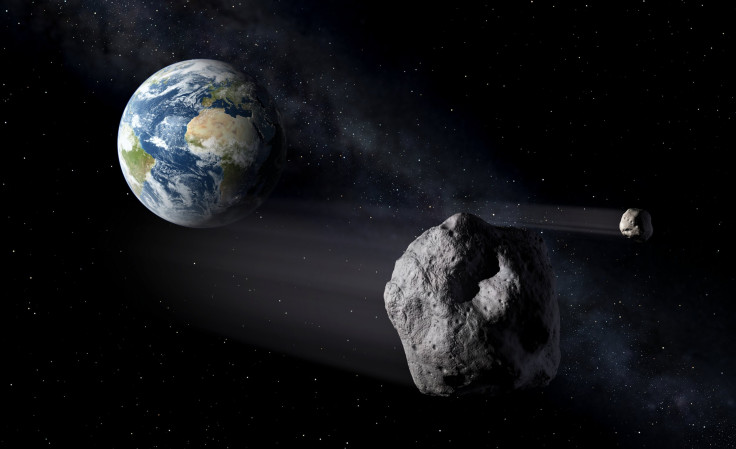'Planet Killer' Asteroid Found Hiding In Sun's Glare Is The Largest Discovered In Years
KEY POINTS
- Researchers conducted their survey of the elusive region during twilight
- They discovered three near-Earth asteroids
- Two of them are more than a kilometer wide, making them "planet-killers"
Asteroids may be lurking within our solar system without us knowing it. A team of astronomers has discovered a set of three near-Earth asteroids (NEA), and one of them is said to be the largest to have been discovered in the past eight years.
The astronomers described their discovery in their work, published Monday in The Astronomical Journal. The objects were essentially hiding in the inner solar system, "interior to Earth and Venus' orbits," which is a region that's particularly difficult to observe because of the bright light of the Sun.
"The small body population in our solar system interior to Earth's and Venus' orbits has not been extensively explored to date because of the difficulty in observing near the glare of the Sun," the astronomers wrote. "This region of space is important for understanding the distribution of Near Earth Objects (NEOs) and objects that may have stable orbits in resonance with Venus."
Even the much-loved Hubble and James Webb Space Telescopes are pointed away from the Sun because of its bright light, according to CNN.
So, how did the astronomers discover the hiding asteroids? They did it with the help of the Dark Energy Camera (DECam) at the Cerro Tololo Inter-American Observatory in Chile, which has the capability to capture large swathes of the sky. The Association of Universities for Research in Astronomy (AURA) even described it as "one of the highest-performance, wide-field CCD imagers in the world."
But apart from using this "state-of-the-art" instrument, the researchers made their observations during a particular time of the day: twilight. It is during these short, 10-minute windows that the conditions are a little more favorable for observing this elusive region.
They discovered three "relatively large" NEOs in the region. These are 2021 LJ4, 2021 PH27 and 2022 AP7. Among them, 2021 PH27 is about a kilometer in size and is the "closest known asteroid to the Sun," AURA noted. It also has "strong interactions" with Venus. It and 2021 LJ4 have rather safe orbits that don't pose a risk to the Earth.
Notably, however, 2022 AP7 is said to be the largest potentially hazardous asteroid to be discovered in eight years. It's about 1.5-kilometer wide and is said to have an orbit that could "place it in Earth's pass" someday, AURA said.
Exactly how dangerous it could be is still unclear. But for now, it's staying "well away from Earth," the study's lead author, Scott S. Sheppard of the Carnegie Institution for Science, said as per CNN.
"So far we have found two large near-Earth asteroids that are about 1 kilometer across, a size that we call planet killers," Sheppard said in the AURA news release.
“Our twilight survey is scouring the area within the orbits of Earth and Venus for asteroids. So far we have found two large near-Earth asteroids that are about 1 kilometer across, a size that we call planet killers,” @CarnegiePlanets' Scott Sheppard. https://t.co/qNFqkL4ac9
— Carnegie Science (@carnegiescience) October 31, 2022
Such surveys are important not only in detecting potentially hazardous NEOs but also in painting a clearer picture of the distribution of bodies in the solar system, according to AURA. And while the inner solar system is pretty tricky to survey, the researchers' work shows that it can be done, even a few minutes at a time.
"After ten years of remarkable service, DECam continues to yield important scientific discoveries while at the same time contributing to planetary defense, a crucial service that benefits all humanity," Chris Davis of NOIRLab said in the news release.

© Copyright IBTimes 2025. All rights reserved.






















